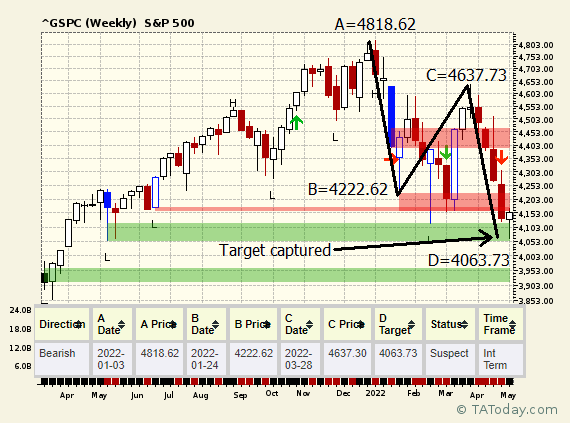Articles
Understanding ABCDs
ABCD patterns are essentially structured price patterns with useful projection capabilities. They existed long before neoclassical technical analysis although we have added our own twist to them to make them more useful. They come in two flavors:
- Bullish ABCD
- Bearish ABCD
These are the same except that one is projecting price higher (bullish) while the other (bearish) is projecting price lower.
What are they? They are structured price patterns that look like lightening bolts. In TA Today we use them for price projection, i.e. the expected target of a directional move.
Here's an example of a bearish ABCD.

A is the starting price point, B the first leg down, C the retrace leg up and D, the projection target lower. A bullish ABCD would be the same structure just with a projection that is higher.
The figure in the lower half of the above chart is the ABCD table and is viewable on TA Today by either pressing the ABCD button when view a chart or, if configured, automatically as a pop-up window.
An explanation for each column's values in the ABCD table are:
- Direction - It's either bullish or bearish
- A Date - The date associated with the ABCD's A point
- A Price - The price associated with the ABCD's A point
- B Date - The date associated with the ABCD's B point
- B Price - The price associated with the ABCD's B point
- C Date - The date associated with the ABCD's C point
- C Price - The price associated with the ABCD's C point
- D Target - The target price for the ABCD structure
- Status - Status can be one of four values
- Suspect - if on the way from C towards the D target the B point is surpassed and volume is not greater (can be thought of as having been activated)
- Confirmed - if on the way from C towards the D target the B point is surpassed and volume is greater (can be thought of as having been activated)
- Potential - if a C point is established yet the B point has not been surpassed yet
- Changing - if a C point was previously established and has since been surpassed
- Time Frame - Daily, Weekly or Monthly
